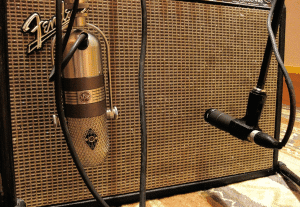What is the 3-1 Rule for Mic Placement?
Avoiding Phase Cancellation

We recently posted about the audio phenomenon of phase cancellation and how it can adversely affect your mix. One of the tips we gave for avoiding acoustic phase cancellation when recording with multiple mics is to reposition them.
In this post we wanted to share a popular mic positioning tip that is often referenced by producers when positioning mics to avoid phase cancellation. It’s called the 3-1 rule.
Using the 3-1 Rule for Placing Mics
Acoustic phase cancellation happens when mics are placed at different distances from the instrument. One mic will inevitably pick up the signal slightly later than the other mic, because it is further away and it takes longer for the sound waves to reach it.
Figuring out the physics behind how sound waves travel, engineers and producers have discovered a ratio for placing the mics that, more often than not, puts them in the sweet spot of being in phase. This is the 3-1 rule. And it’s pretty simple.
For every one unit of distance one mic is from the instrument there should be three units of distance from the other mic. For example, if you’re recording a grand piano and have one mic positioned about one foot above the strings, your other mic should be placed three feet away from that mic and also at one foot above the strings.
For the untrained ear, it can be hard to detect when your mix has some phase cancellation in it. One of the tricks you can do to train yourself is to set your mix channel to mono and listen to the bass. If it sounds flatter than normal, there’s a good chance you’ve got some phase cancellation.
If possible, it’s always best to try and catch phase cancellation in the recording process. While there are plugins and even pieces of hardware that can help fix phase cancellation, it’s much easier to fix it upfront by readjusting your mics. By following the guidelines of the 3-1 rule you should end up with two mic recordings that are close to being in phase and ultimately a better mix and master.




